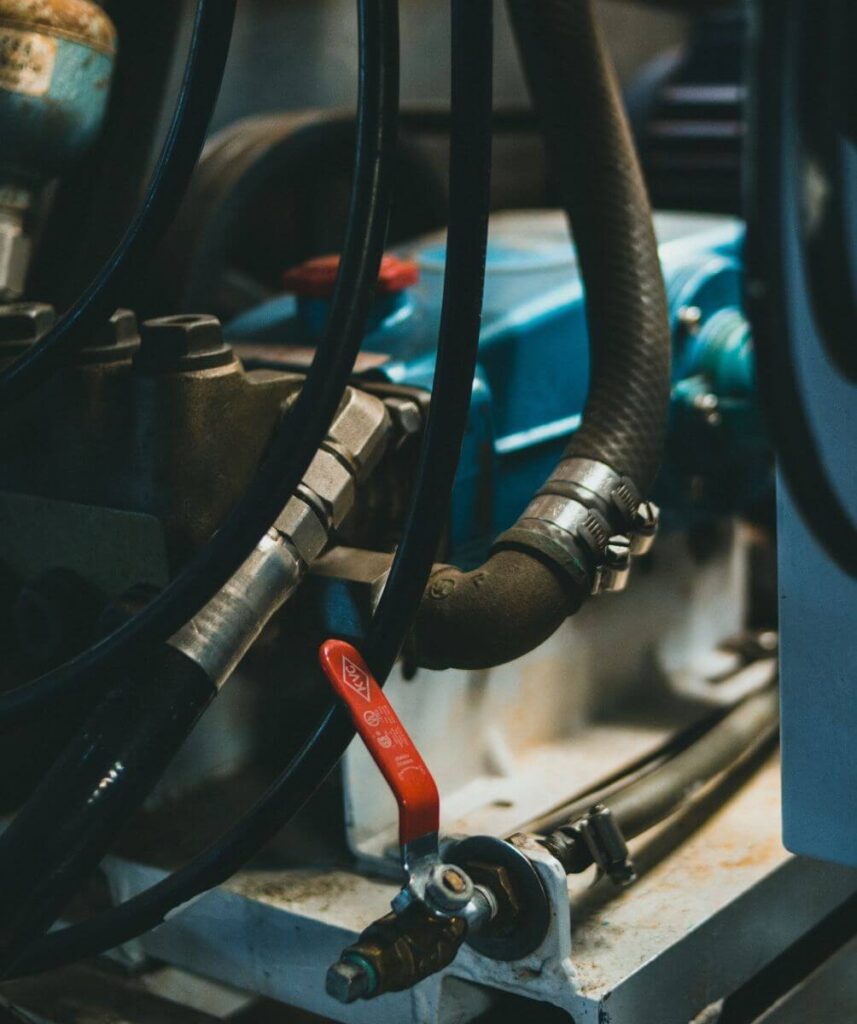The cylinder is generally the most important part of a hydraulic system and requires special expertise to properly service or repair, but the hoses used in hydraulics are also essential to the system’s ability to work safely and efficiently. We have previously shared information about common types of hydraulic cylinder, as well as important safety tips about hoses and couplings. In addition to those topics, any owner of industrial hydraulic equipment should know the basics about how hydraulic hoses are constructed and the key characteristics that determine which type should be used in a given system.
Hydraulic hose construction components
In a hydraulic system, you can use one of two types of fluid connection: hose assemblies or rigid tubing. Rigid tubing may offer better heat dissipation, lighter overall weight and ability to handle higher pressures. However, hose assemblies are more resistant to damage from component movement, are generally easier to route around other components or obstacles, and tend to better dampen pressure surges. Hoses are a relatively safe, versatile, and cost effective option for most equipment owners.
There are three basic components to a hydraulic hose assembly. First is the tube itself, made from stock tested for chemical resistance relevant to the particular fluid that will be flowing through the hydraulic system. In simple terms, the hose must effectively contain the hydraulic fluid throughout the system. The second component is reinforcement, which strengthens the hose so it can resist any internal pressure created by the system. The three most common types of hose reinforcement are braided, spiraled and helical. The third hose component is the cover, which protects both the hose and reinforcement from external/environmental hazards. These hazards might include harsh weather, extreme temperatures, or chemical residue. Together, these components should form a highly durable and reliable path for hydraulic fluid to flow through, functioning like the circulatory system of the body.
Key hydraulic hose characteristics
Even with an understanding of the components that make up a hydraulic hose assembly, it can still be challenging to know what specific hoses are best for your system. To narrow things down, you should consider the key characteristics of the hose. First, know the working pressure of the hose. You should know what the pressure of your system will be and compare that to the rated working pressure of the hose you intend to use. If the rated pressure is too low, the hose is not safe to use and will create a risk of system rupture and potential damage or worker injury.
Another characteristic to consider is temperature range. As with pressure, each hose has a recommended working temperature range. Exposing a hose to temperatures outside of this range is dangerous. Check the technical information about the specific hydraulic fluids used in your system, as well as environmental data, to determine what working temperature range is needed for your hose assembly.
Finally, consider the precise route of your hydraulic hose and make sure you are not bending or flexing it beyond its minimum recommended radius. Even though hoses are much more flexible than rigid tubing, there are limits to how much they should be flexed. Too much tension puts stress on the hose material and could impair its ability to withstand system pressure. These are only a few characteristics to think about when selecting and routing hydraulic hoses, and it’s always best to consult trained hydraulic technicians to ensure your equipment runs safely and effectively.
Source: A Guide to Preventive Maintenance & Safety for Hydraulic Hose & Couplings, Gates Corporation, 2009.

